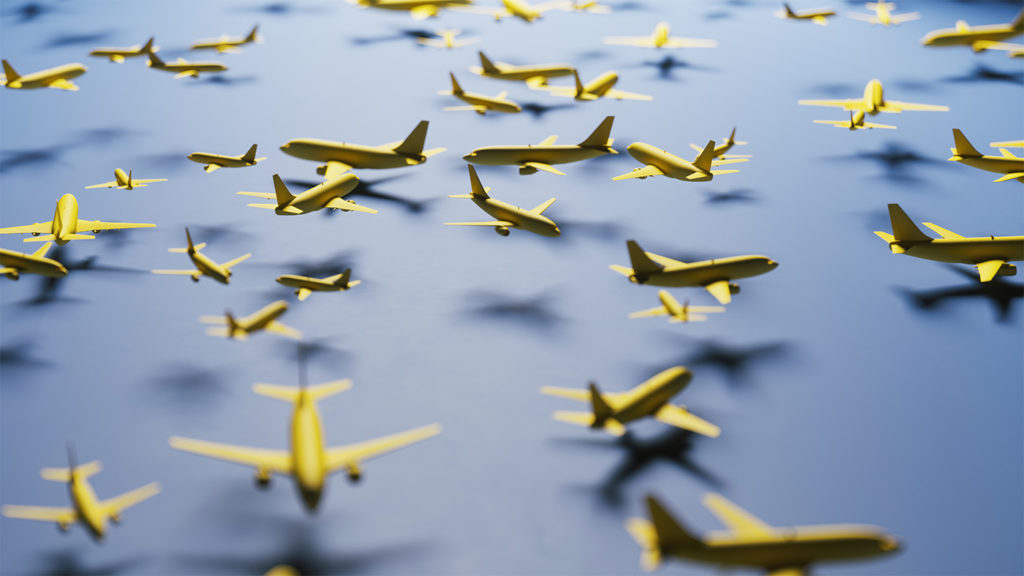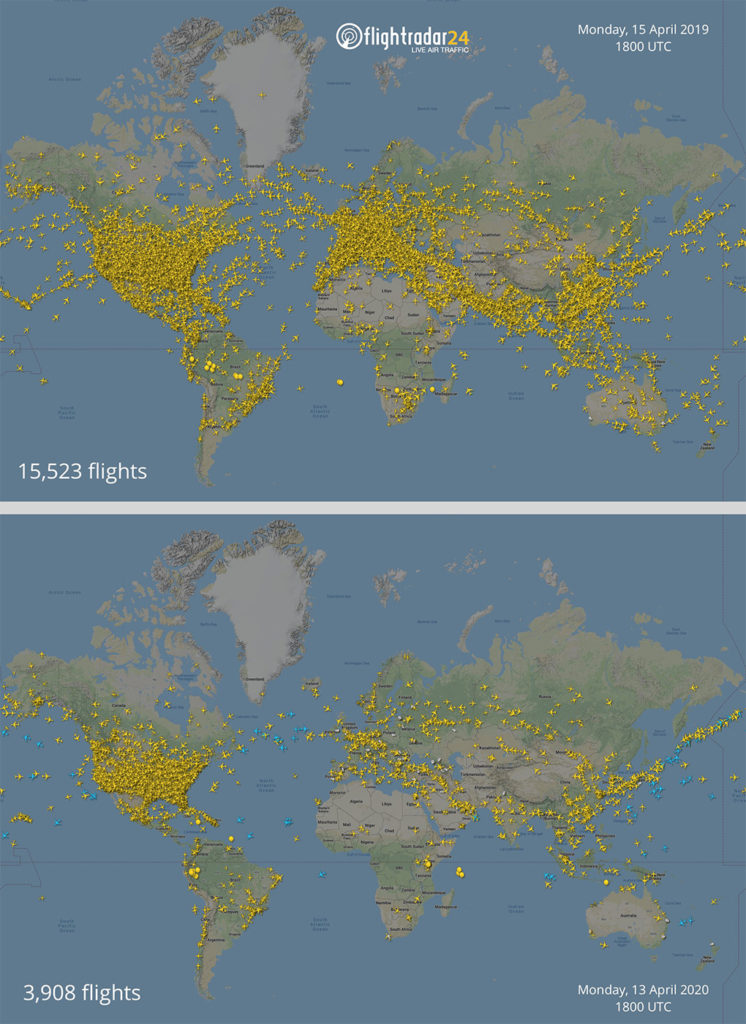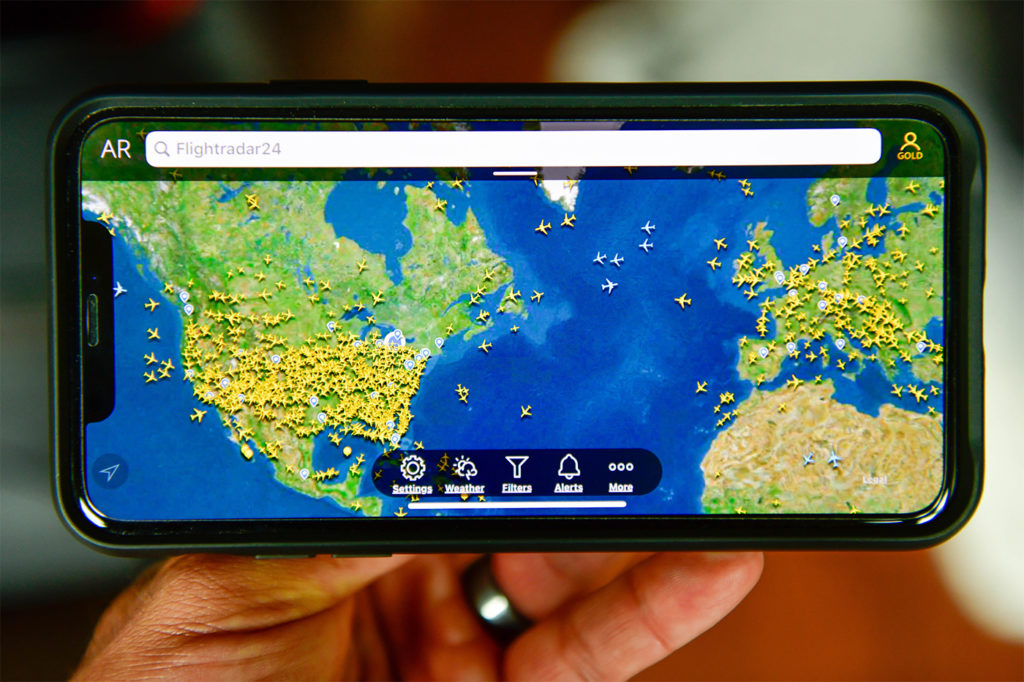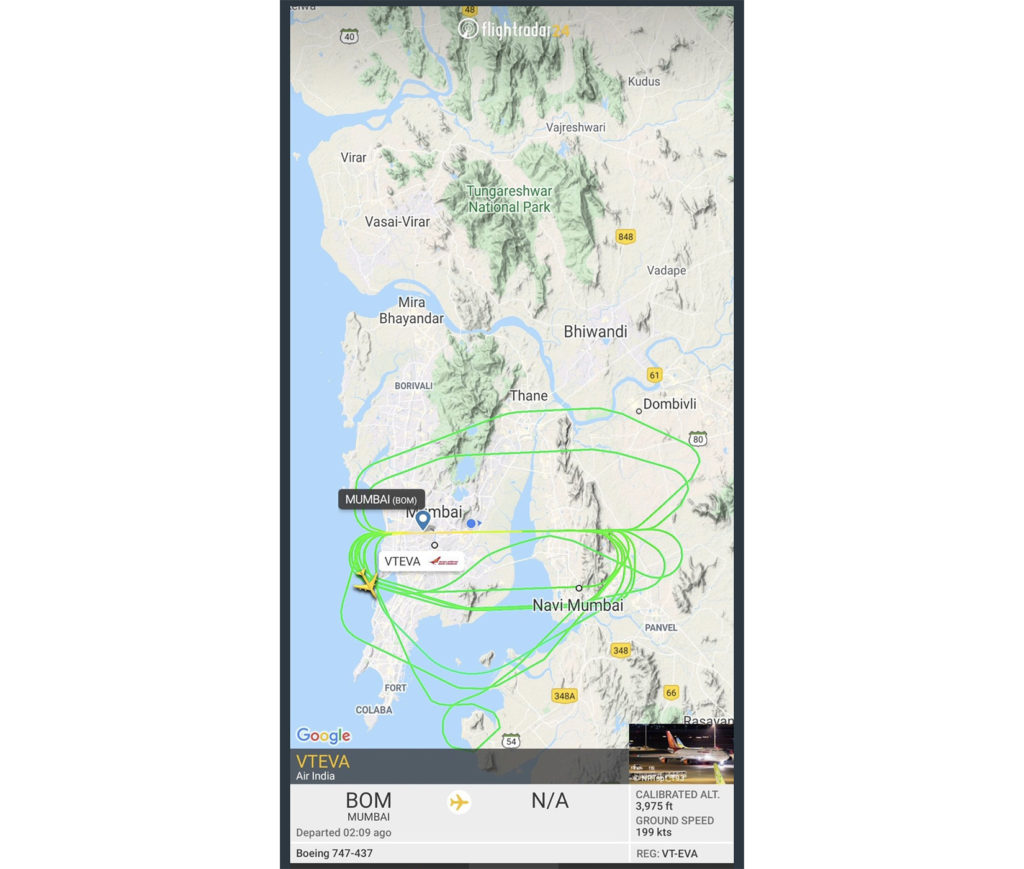How Flightradar24 charted COVID’s changed skies – Skies Mag
By
Dayna Fedy-MacDonald |
July 28, 2020
Dayna Fedy-MacDonald |
Estimated reading time 10 minutes, 27 seconds.
Editor’s note: This story appears in the Skies special issue Aviation in the Face of Covid-19. Access the full issue here.
Looking at a comparison of flight radar maps from around the world, then and now, the stark difference in air traffic is sure to raise eyebrows. Skies that were once filled with hundreds of thousands of flights each day are now only a fraction as occupied. The coronavirus brought the world to a halt in what seemed like overnight; global aviation has never seen or experienced anything like it.

What better way to gauge the effects Covid-19 has had on air traffic over the last several months than through the popular live air traffic service, Flightradar24? Whether through its website, flightradar24.com, or on the mobile app, the service welcomes millions of users — from aviation enthusiasts who want to observe where their favorite aircraft is going, to individuals who want to track a family member’s flight returning from vacation.
The use of ADS-B, multilateration, and radar data combined with schedule and flight status data from airlines and airports account for the accuracy of Flightradar24. And thanks to augmented reality technology, users can open the app, point their phone to the sky and receive details on flights overhead.
On March 9, 2020 — just days before the World Health Organization declared the global outbreak of Covid-19 a pandemic — there were a total of 175,350 flights around the world, according to statistics from Flightradar24. That number was more than cut in half by March 29, with only 64,522 total flights, and hit a record low on April 12 with just 46,294 global flights.
“What changed? Everything,” said Ian Petchenik, Flightradar24’s director of communications. “We’re tracking nearly 100,000 fewer flights [each day].”
For Flightradar24 users, this means “what they’re looking for and what they’re following have changed,” he added. “If we’re talking about our app users or website users who are aviation enthusiasts, the flights that they follow have changed from special liveries, special aircraft and things like that, to what’s bringing cargo or what’s bringing relief supplies to an airport near them or to airports in general.”

Out of the ordinary
Since the pandemic changed the skies, plane spotters have redirected their attention to different types of flights or unusual activity seen on Flightradar24.
In early June, a Boeing 747, known by many as the “Queen of the Skies,” was seen on Flightradar24 flying around in circles over Mumbai, India. Users took to Twitter to question the reason behind the flight pattern; some wondering whether the aircraft had performed a touch-and-go, or whether it was in a holding pattern. Flightradar24 confirmed that the particular aircraft, registered VT-EVA, had been dormant since early March and was likely performing a test or training flight.
Another interesting flight pattern seen on Flightradar24 in late May showed flight AI1945 from Delhi to Moscow make a U-turn over Uzbekistan to return back to Delhi. Flightradar24 was able to confirm that the flight crew was tested for Covid-19 prior to that particular flight, and the results, which were not ratified until the aircraft was already airborne, showed that the pilot was infected with the virus — prompting the aircraft’s immediate turnaround.

Aviation enthusiasts spotted a unique flight pattern on Flightradar24 in late April over Berkshire in southeast England. A pilot flying a Reims-Cessna F150M spelled out “NHS” (which stands for National Health Service) with his flight path. While the pilot may have had good intentions, he went against Civil Aviation Authority rules that restricted recreational flying during the lockdown, with the exception of flights to maintain engine health. However, even on an engine health flight, pilots were not to travel beyond a 10-nautical-mile radius — a rule the Cessna pilot clearly breached.
As some restrictions are now beginning to ease, non-commercial/recreational flights have been abnormally outnumbering commercial traffic.
On May 20, Flightradar24 tracked more than 100,000 daily flights for the first time since March 22 — 110,361 flights, to be exact. Non-commercial flights, which were up 9,092 from the previous day, accounted for the majority of the growth, while the commercial side added 2,668 flights, according to Flightradar24’s Covid-19 blog. And as June began, global air traffic levels showed signs of a slow recovery, but were still 48 percent below the traffic levels at the same time the previous year.
“Commercial traffic is starting to come back slowly — we’re talking about a few percentage points here and there. . . . But the real growth has been non-commercial traffic where people are taking advantage of the ability to leave the house again,” said Petchenik. “But they can’t necessarily go anywhere, so they’ve taken to the skies.”

For pilots who just want to get out of the house, it’s certainly not a bad way to practice “social distancing.” And this logic could also partially explain the astronomic increase in glider activity from the beginning of June, especially in Europe. During the first few days of June 2019, Flightradar24 tracked a few dozen gliders in the skies above Europe. On June 1, 2020, the service tracked roughly 1,200 gliders.
“That’s something that’s been fascinating to see,” said Petchenik. “A single-person glider at 2,000 feet is a great way to stay away from everyone and not add a whole lot of noise to the sky. It’s very interesting to watch and see how many people are taking advantage of the ability to now leave their homes.
“We’ve had some glider pilots write in and say, ‘This is the best weather we’ve had for gliding in years.’ So I guess there’s a small bright spot in aviation; the glider pilots in Europe are happy.”

The new normal?
Flightradar24 has reflected on a few things that stand out as peculiar in aviation during the times of Covid — particularly the retirement of aircraft. Delta Air Lines recently retired its fleet of MD-88 and MD-90 aircraft in June of this year, which was earlier than planned due to Covid-19. Flightradar24 provided all the flight tracking data for the final flights of Delta’s MD-88s and MD-90s, which took place on June 2, 2020.
“It’s been surreal watching all of these workhorse aircraft be somewhat unceremoniously retired,” said Petchenik. “There has been some ceremony, but just thinking back to how American Airlines retired their MD-88 last September… there was a party all day, multiple flights, media flying in from all over the world and things like that. So it’s gone from that to just a few lines on a press release.

“Following those end-of-an-era type things that would normally receive such huge press, that are now just kind of being written down as part of the new — I don’t want to call it normal — but part of what is happening now… it’s surreal.”
While the fate of aviation, and what a “new normal” might look like for airlines remain uncertain, the slow but steady increase of global air traffic numbers on Flightradar24 offer a glimpse of hope that there are brighter days ahead. From the end of May into the beginning of June, total global flights per day have remained above the 100,000 mark — a drastic improvement from the record lows in April.

And while passenger flights over the last several months have been few and far between, many airlines like Air Canada, United Airlines, China Eastern, and Qatar Airways have gotten creative by taking out the cabin seats in their passenger aircraft to be able to carry essential cargo like relief supplies — providing Flightradar24 users with a new reason to track such aircraft.
For the service itself that aviators, enthusiasts and the like utilize daily, Petchenik said Flightradar24 has been very well organized to be able to weather the Covid storm.

“I’m in Chicago, our main office is in Stockholm, and we have a large collection of developers all over Europe,” he said. “Most of us are already used to working remotely on a regular basis. . . . But working remotely in a pandemic is a different ballgame. So I think everyone’s done a really remarkable job managing the situation and getting through it, and looking to see what’s on the other side.”
Dayna Fedy is online director/editor with MHM Publishing, working across the Vertical, Vertical Valor, Skies and Insight magazine brands. Dayna has been reporting on the rotary- and fixed-wing industries since joining MHM in 2017.















![Toni Kroos là ai? [ sự thật về tiểu sử đầy đủ Toni Kroos ]](https://evbn.org/wp-content/uploads/New-Project-6635-1671934592.jpg)


